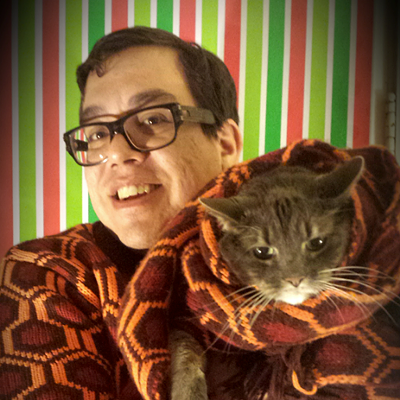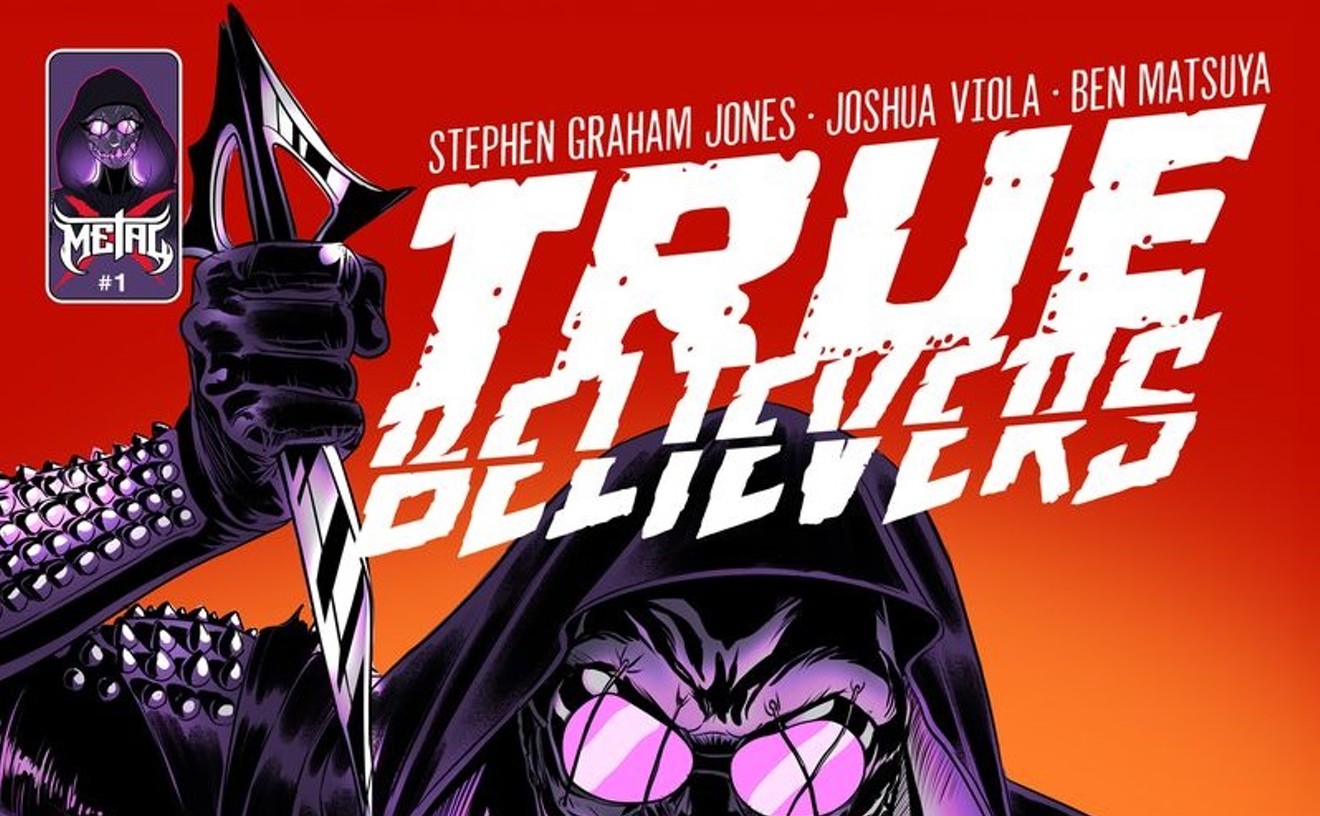Argento's first film to stray from and yet expand the giallo formula, 1977's Suspiria -- which screens Wednesday at the Alamo Drafthouse in its Scream Screen series -- became his cinematic masterpiece and raised the bar for horror filmmakers for decades. Sadly, Argento himself could not best the film in the years that followed.
See also: Suspiria: Experience the True Nightmarish Genius on the Big Screen at Alamo
The film, co-written with then-partner Daria Nicolodi and based on stories she heard from her grandmother, tells the supernatural tale of an American ballet student (Phantom of the Paradise's Jessica Harper), who arrives at a prestigious German dance school on the same night that a suspicious young dancer and her friend are brutally murdered. A series of bizarre events and other murders cause the American to investigate further and unravel the terrifying mystery haunting the school.
A film classic, Suspiria is filled with amazing, almost hallucinatory set pieces; a vivid and nightmarish color palate; horrific and inventive death scenes; and a memorable score from Italian prog-rockers Goblin that will stay with you long after the credits roll. Here are six reasons why Suspiria remains a deep cut above the rest of horror's progeny.
6) The blood red pleasures of Technicolor Argento and his cinematographer, Luciano Tovoli, saturated their film in primary colors: Green, blue and, of course, blood red illuminate an offputtingly unrealistic world and create the illusion that it exists in a nightmare. The film's prints were then developed using a particular Technicolor color process that brought out the pure, vivid nature of those three colors, a process famously used in The Wizard of Oz and Gone With the Wind, but the process was considered outdated thirty years later; Suspiria was one of the last films to use this process before the machines that performed this task were destroyed and the advance of film color became a little more muted. It wouldn't be until Zhang Yimou's 2002 action film Hero that an intact Technicolor machine would resurface and filmmakers and audiences could experience the warm wash of brilliant colors once again. With Suspiria, a large part of its magical power comes from the hypnotizing colors and how they light up, glow or, more important, drip and splatter across a big screen. 5) Daddy Dario's horror academy for little girls Argento and Nicolodi had originally envisioned the horror film's ballet students to be little girls with the American student, Suzy Bannion, the oldest at twelve. But the studio and the film's producer, Salvatore Argento (Dario's daddy), worried that a film depicting violence against children would surely be banned. Dario relented but decided not to change any of the dialogue in an effort to create an unsettling innocent naivete for the characters; he opted to build the sets a little bigger to dwarf the actors a bit. (Notice that the height of every door and doorknob creates the illusion of a scary, grownup world for the unsuspecting young ladies.) Argento also had cinematographer Tovoli study Disney's Snow White and the Seven Dwarves for some childlike inspiration. 4) Don't worry, they'll fix it in post As was commonplace for Italian film productions, all audio was recorded after the fact -- which made for a unique filming experience with a cast from Italy, Germany, France and America. Most actors would speak their lines in their native tongue, knowing it would be covered by dubbing. This process adds to the film's out-of-body experience; star Jessica Harper has fabled tales of filming intense scenes and hearing the crew hammering away while building a set right next door.Keep reading for three more reasons why Suspiria is a cut above. 3) This scene needs more Goblin Taking advantage of the post-film audio, Argento worked with up-and-coming Italian prog-rockers Goblin, headed by the unique Claudio Simonetti, to record the film's legendary score before production. Given the inspiration of a little girl's ballerina music box, Goblin created the haunting main title song, which Argento used during production along with other compositions, often playing the music at high volumes during the filming of key scenes to make his actors uneasy. In one gaffe in the film's opening scene, Argento can be seen in the reflection of the partition in Suzy Bannion's cab, screaming the melody from Goblin's composition at actress Harper. Judging by her face in that sequence and other moments of the film utilizing the score, his method worked.
2) The first cuts are always the deepest Suspiria is famous for its style and notorious for its gore and shocking death scenes, which pushed the boundaries in 1977. Censors the world over took out their scissors and made a victim of the film's stylish murders, including one involving a beating heart being stabbed repeatedly and another with a dog mauling a victim's throat. But the weirdest cut may be one made by the American distributor, 20th Century Fox, which removed a lengthy and key scene starring German favorite Udo Kier as a therapist and expert on witchcraft, whom Suzy Bannion seeks out in during her investigation of what's really going on at her spooky school. The scene is long and maybe oversimplifies the dark arts possibilities in the story, but features some unique camera shots and a very un-Kier-like performance. Both the complete gore and this extended scene have been restored on DVD/Blu-ray versions of the film that began popping up in 2001; sadly, there's no intact 35mm print of the film. 1) The Three Mothers and beyond Suspiria was a huge hit the world over, and so Argento took a little time to expand on the storytelling that began in the film, mostly revolving around the set of powerful witches known as the "Three Mothers": Sighs, Darkness and Tears were their dark specialties. In 1980, Argento released Inferno, which moved the setting to New York City and contained much of the same style and mystique as Suspiria but was somewhat diluted; missing the Technicolor process, Inferno is a film full of purples, pinks and yellows. Considered by many a misstep, Argento's Mother of Tears was released thirty years after Suspiria, during the filmmaker's driest spell; it lacks much of the panache and legacy set by the prior two entries in the saga. Asia Argento, Dario's daughter and star of Mother, has hinted that a prequel to the trilogy could appear. If her own filmmaking talents are onboard, it could mark a promising return to form for the series.In 2008, rumors began circulating that director David Gordon Green (George Washington, Undertow) was producing a remake of Suspiria that was to star Natalie Portman in the Suzy Bannion role and take place in America. Plans have moved back and forth since then, with many elements and actors dropping out over the years. The idea has been met with both anger and interest by fans of Argento's original, which many feel can't be duplicated. The current word on the project is that it may never happen due to legal issues over rights. Perhaps when you play in a world of witchcraft and sorcery, it's best to take a lesson from Suspiria's heroine and not stick your head where it might get cut off.
Suspiria screens at 7:30 p.m. Wednesday, January 28 at the Alamo Drafthouse, 7301 South Santa Fe Drive in Littleton. Tickets are $7 and can be found at drafthouse.com.
Dear Constant Reader, you can learn more about Keith Garcia on Twitter: @ConstantWatcher











